CV with TEACHING PORTFOLIO and STUDENT WORK

Above-"Textiles Now" Eckhaus Gallery, Kutztown University of PA, exhibition of student, faculty and alumni work
CV-MICHAEL RADYK
PROFESSIONAL EXPERIENCE
Michael Radyk Studio, 1999-present
Michael Radyk Studio, 1999-present
Philadelphia, PA
Studio Artist and Designer of fine art, textile wall pieces, exhibiting in juried and
invited shows.
Studio Artist and Designer of fine art, textile wall pieces, exhibiting in juried and
invited shows.
Director of Education, 2016-2019
American Craft Council
Founding Editor in Chief, journal, American Craft Inquiry
Minneapolis, MN
TEACHING EXPERIENCE
Kutztown University of Pennsylvania 2011-16
Kutztown, PA
Kutztown, PA
Chair of Crafts, 2012-2016
Professor of Textiles
Professor of Textiles
Area Head, Textiles, 2011-2016
Graduate Faculty
Teaching all levels of Textiles/Fibers, Intro to Textiles & Material Studies, 5 levels of Textiles(reactive and acid dyeing, felting, knotting, shibori, fabric manipulation, hand and machine embroidery, nuno felting, machine roller felting, free motion embroidery, color, design) and 5 levels of Weaving courses (4-16 harness structures, digital design, pattern weaving, rug weaving, material exploration, structure, color interaction, place), Professional Practices(career and portfolio development, graduate school, artist writings, resumes, promotional materials, web and self promotion, artist interviews, studio design and development), Individual and Independent Study Instruction. Undergraduate BFA & BS students, Masters of Art Education Graduate students.
Responsible for assessment, departmental ordering, budgeting, administrative, technology and equipment grants, curriculum and advising duties.
Savannah College of Art and Design (SCAD) 2010-11
Savannah, GA
Professor in Fibers/School of Design
Courses taught include Undergraduate classes: Images on Fabric, Intro to Textiles,
Fabric Manipulation, Portfolio Preparation. Advanced Fibers Studio 1 & 2, Three Dimensional
Textiles and Degree Projects/Thesis. Graduate Courses include: Professional Practices,
History as Source, Research Practices, Thesis Projects and Individual Instruction.
University of Georgia, Lamar Dodd School of Art 2008-10
Athens, GA
Visiting Artist & Professor of Art
Courses taught include Undergraduate classes: Intro to Textiles, Fabric Manipulation,
All Levels of Weaving, Advanced Fibers Studio, Textile Futures, and Degree Projects/Thesis.
Graduate courses include: Professional Practices, Research Practices, Thesis Projects
and Individual Instruction.
Rhode Island School of Design (RISD) 2006-08
Providence, RI
Instructor for Summer & Winter Session in Textiles.
EDUCATION
2008 Rhode Island School of Design (RISD), Providence, RI
MFA, Textiles
2008 Brown University, the Sheridan Center for Teaching and Learning, Providence, RI
Certificate in Collegiate Teaching
1997 Tyler School of Art, Temple University, Philadelphia, PA
BFA, Fibers & Material Studies, Art History Minor
EXHIBITIONS
2022
Solo Exhibition, Abington art Center, Jenkintown, PA
Installation, Land-Feels and Beachfront Properties, Commerce Square, Philadelphia, PA
2021
Solo Exhibition, Reemergence, 18th Annual Betsy Meyer Exhibition, Main Line Art Center, Haverford, PA
New Normal: Working Through Quarantine, Payne Gallery, Moravian University, Bethlehem, PA
2019
International Fiber Art Fair, Hangaram Art Museum, Seoul, South Korea (catalogue)
Structured, Joan Mondale & Studio Galleries, Textile Center, Minneapolis, MN
Focus: Fiber 2019, Kent State University Art Museum, Kent, OH (catalogue)
2018
Super Surfaces, In the Paper Gallery, Seoul, South Korea (catalogue
Blue/Green: color/code/context, browngrotta arts, Wilton, CT (catalogue)
2017
Still Crazy After All These Years, 30th Anniversary Exhibition, browngrotta arts, Wilton, CT, (catalogue)
2016
Focus: Fiber 2016, Kent State University Museum, Kent, OH (catalogue)
2015
Influence and Evolution: Fiber Sculpture-Then and Now, browngrotta arts, SOFA, Chicago, IL
Somewhere Between Black & White, Harry Wood Gallery, Arizona State University, Tempe, A
The Constant Thread, Hambidge Center, Rabun Gap, G
Influence and Evolution: Fiber Sculpture-then and now, browngrotta arts, Wilton, CT (catalogue)
2014
Focus: Fiber 2014, Erie Art Museum, Bacon Gallery, Erie, PA (catalogue)
Small Expressions, Fuller Craft Museum, Brockton, MA
Fibremen 4, International Exhibition, Kherson Museum, Kherson, Ukrain
International TECHstyle Art Biennial, San Jose Museum of Quilts & Textiles, San Jose, CA
Ebb & Flow Yardage Exhibition, Handweavers Guild of America, Convergence, Providence, RI
2013
National Fiber Directions 2013, Wichita Center for the Arts, Wichita, KS
Victory for Tyler; Victory for All, ICE Box Project Space, Crane Building, Philadelphia, P
Faculty Biennial Exhibition, Miller Gallery, Kutztown University of Pennsylvania
2012
Inside/Outside the Box, ICE Box Project Space, Crane Building, Philadelphia, PA
Solo exhibition, McLanahan Gallery, Penn State University, Altoona, PA
Fiber Options: Material Explorations, Maryland Federation of Art, Annapolis, MD
2011
New Weave: Five Contemporary Weavers, Commonwealth Gallery, School of Human Ecology, Design Gallery, University of Wisconsin, Madison, WI
Solo Exhibition, Artist in Residence Exhibition, Oregon College of Art and Craft, Portland, OR
Fibremen 1, International Exhibition, Kherson Museum, Kherson, the Ukraine
2010
Binary Fiction: Digital Weaving, Eisentrager-Howard Gallery, University of Nebraska, Lincoln
34th Annual Philadelphia Museum of Art Craft Show, Philadelphia, PA
New Fibers 2010, FAN Gallery, Eastern Michigan University, Ypsilanti, MI
ART Healing Lives, Textile Center, Joan Mondale Gallery, Minneapolis, MN
Materials: Hard & Soft, Greater Denton Arts Council, Center for the Visual Arts, Denton, TX
2009
Spotlight 2009, Clayton Gallery, Kennesaw State University, Kennesaw, GA
Extreme Threads: Works in Fiber, Stitch and Surface, Defoor Center, Atlanta, GA
2008
Inaugural Faculty Exhibition, Lamar Dodd School of Art, University of Georgia, Athens, GA
RISD Textiles: New Talent, New York Design Center, New York, NY
RISD MFA Thesis Show, Rhode Island Convention Center Providence, RI
Craft Forms International, Wayne Art Center, Wayne, PA
2007
Content in Context, Sol Koffler Gallery, Providence, RI
Focus on Fiber: The Work of Michael Radyk and Timea Tihanyi, Two-Person Exhibition,
Society for Contemporary Craft, Pittsburgh, PA
FELLOWSHIPS & RESIDENCIES
2020 Hambidge Artist Residency, Rabun Gap, GA
2019-20 Clothworkers’ Center for Textiles, V & A Museum, London, UK
Virginia Center for the Creative Arts, Amherst, VA 2010 Oregon College of Art and Craft Residency Program, Portland, OR
GRANTS
2021 Illuminate the Arts Grant, City of Philadelphia Office of Arts, Culture and the Creative Economy
2020 Artist Relief Grant, Organized by United States Artists, Chicago, IL
2019 Gus Foundation Research Fellowship, Clothworkers’ Centre Archive, V & A, London, UK,
2012-16 College of Visual & Performing Arts Faculty Development Grant, Kutztown University
2014 Kutztown University Foundation Grant for Engage Conference and Exhibition, Kutztown University
2010 Ruth and Harold Chenven Foundation Grant
2010 Textile Society of America Presenter Symposium Grant, Lincoln, NE
AWARDS
2021 18th Annual Betsy Meyer Award for Contemporary Art & Exhibition, Main Line Art Center, Haverford, PA
2015 Presidents Prize, FOCUS; Fiber, Textile Art Alliance of the Cleveland Museum of Art, Erie Art Museum, Erie, PA
2014 Award, Ebb and Flow Yardage, Handweavers Guild of America Convergence, Providence, RI
2008 Visionary Award of Excellence, Craft Forms International, Wayne Art Center, Wayne, PA
2015 Presidents Prize, FOCUS; Fiber, Textile Art Alliance of the Cleveland Museum of Art, Erie Art Museum, Erie, PA
2014 Award, Ebb and Flow Yardage, Handweavers Guild of America Convergence, Providence, RI
2008 Visionary Award of Excellence, Craft Forms International, Wayne Art Center, Wayne, PA
COLLECTIONS
2016 Cleveland Museum of Art, Purchase with the Textile Alliance of the Cleveland Museum of Art
2011 Special Collections Library, University of Georgia, Athens, GA
2010 Special Collections Library, Rhode Island School of Design, Providence, RI
LECTURES, GUEST CRITIC, JUROR
2019 Awards Juror, American Craft Exposition, Evanston, IL
2018 Inaugural Selection Juror, Burke Prize for Craft, MAD Museum, New York, NY
2017-19 Juror and Organizer, Emerging Voices Awards, American Craft Council, Minneapolis, MN
2019 Fellowship Juror, Jerome Foundation Exhibition Grants, Textile Center, Minneapolis, MN
2018 Selection Juror, Philadelphia Museum of Art Craft Show, Philadelphia, PA
2016 Juror, Rare Craft Awards, sponsored by Balvenie Distillery and Anthony Bourdain, New York, NY
2015 Lecture, Cleveland Museum of Art, Cleveland, OH
2015 Lecture, Kent State University, Kent, OH
CURATORIAL PROJECTS and EXHIBITION ORGANIZER
2018 Jiseon Lee Isbara: Displaced-Part 2, with Textiles Center, ACC-On View Gallery, Minneapolis, MN
2018 Memory Persuaded: Jayden Moore, ACC-On View Gallery, Minneapolis, MN
2014 ENGAGE: Color, Ritual, Material Studies, conference and exhibition, Miller Gallery, Kutztown, PA
BIBLIOGRAPHY
2020 “Highlight,” TxP- Textile Plus Magazine, Netherlands, Summer 2020, issue 252. 46.
2019 “Moving On,” RISDXYZ, Providence, RI, Fall/Winter 2019/20. 90.
2019 “International Fiber Art Fair,” catalogue, Seoul, South Korea, 2019. 12.

TEACHING PHILOSOPHY
My teaching philosophy is a natural extension of my own work as a weaver, designer and textile/fiber artist. My goal as an academic is to provide instruction in basic and advanced techniques while helping students to apply and extend those same techniques into unknown and contemporary expression. I am dedicated to providing students with a historically based framework that also fosters the creative freedom that can lead to multiple layers of expression and meaning.
The strategies of research and studio work are central to my work. Looking at the coexisting worlds of art, design, craft and architecture, I am always delighted by the complexity of the textile discipline. I appreciate the opportunity to teach students of diverse backgrounds, including both graduate and undergraduate textile students as well as students from architecture, painting, printmaking, industrial design and craft mediums. I believe this variety is essential to experience fully the excitement in the art form and its uses in functional and nonfunctional objects.
My teaching is reflective and responsive to the life of the entire class, as well as to the creative development of its individual students. I begin with the goal of fusing material, color and pattern investigations by teaching the skills that will grant the student the ability to question the medium and discover new ideas. As an academic and artist, I work to encourage interest and critical thought by exposing students to the domains of the history and current practice in the textile field as well as architecture, art and design fields using a variety of films, discussions and presentations. My own education has been extremely rewarding and I strive to provide students with the same experience.
The strategies of research and studio work are central to my work. Looking at the coexisting worlds of art, design, craft and architecture, I am always delighted by the complexity of the textile discipline. I appreciate the opportunity to teach students of diverse backgrounds, including both graduate and undergraduate textile students as well as students from architecture, painting, printmaking, industrial design and craft mediums. I believe this variety is essential to experience fully the excitement in the art form and its uses in functional and nonfunctional objects.
My teaching is reflective and responsive to the life of the entire class, as well as to the creative development of its individual students. I begin with the goal of fusing material, color and pattern investigations by teaching the skills that will grant the student the ability to question the medium and discover new ideas. As an academic and artist, I work to encourage interest and critical thought by exposing students to the domains of the history and current practice in the textile field as well as architecture, art and design fields using a variety of films, discussions and presentations. My own education has been extremely rewarding and I strive to provide students with the same experience.
IMAGES OF STUDENT WORK
WEAVING
Color and Pattern Project, Place Project
Sample Project, Color and Surface, Place Project
Rug Weaving Project

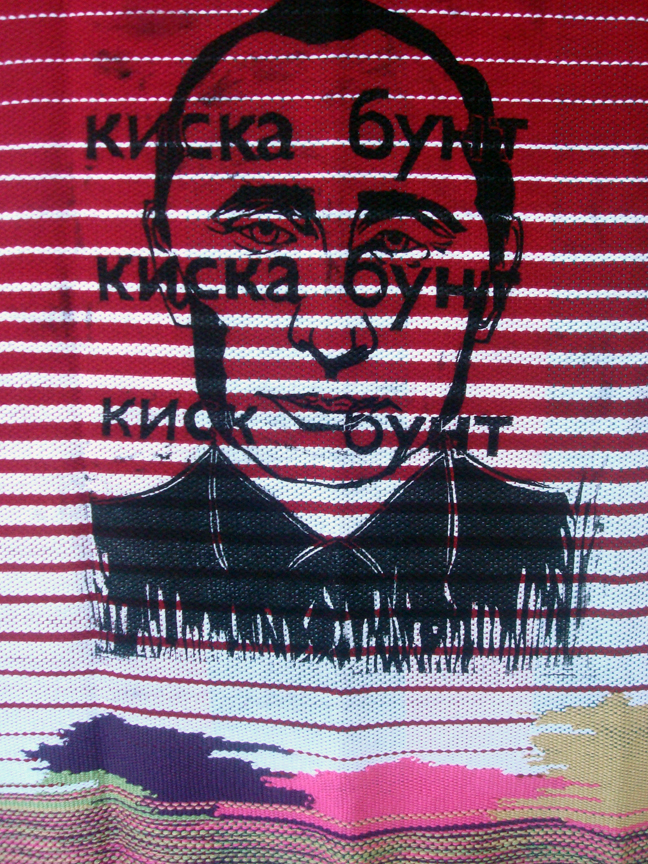


Tapestry Self Portrait Project
Above and below-


Apparel Textiles & Scarf Project based on Place



Beginning Samples based on Place.
Advanced Weaving Studio
Material Exploration/ Material Creation Project
Above and below-


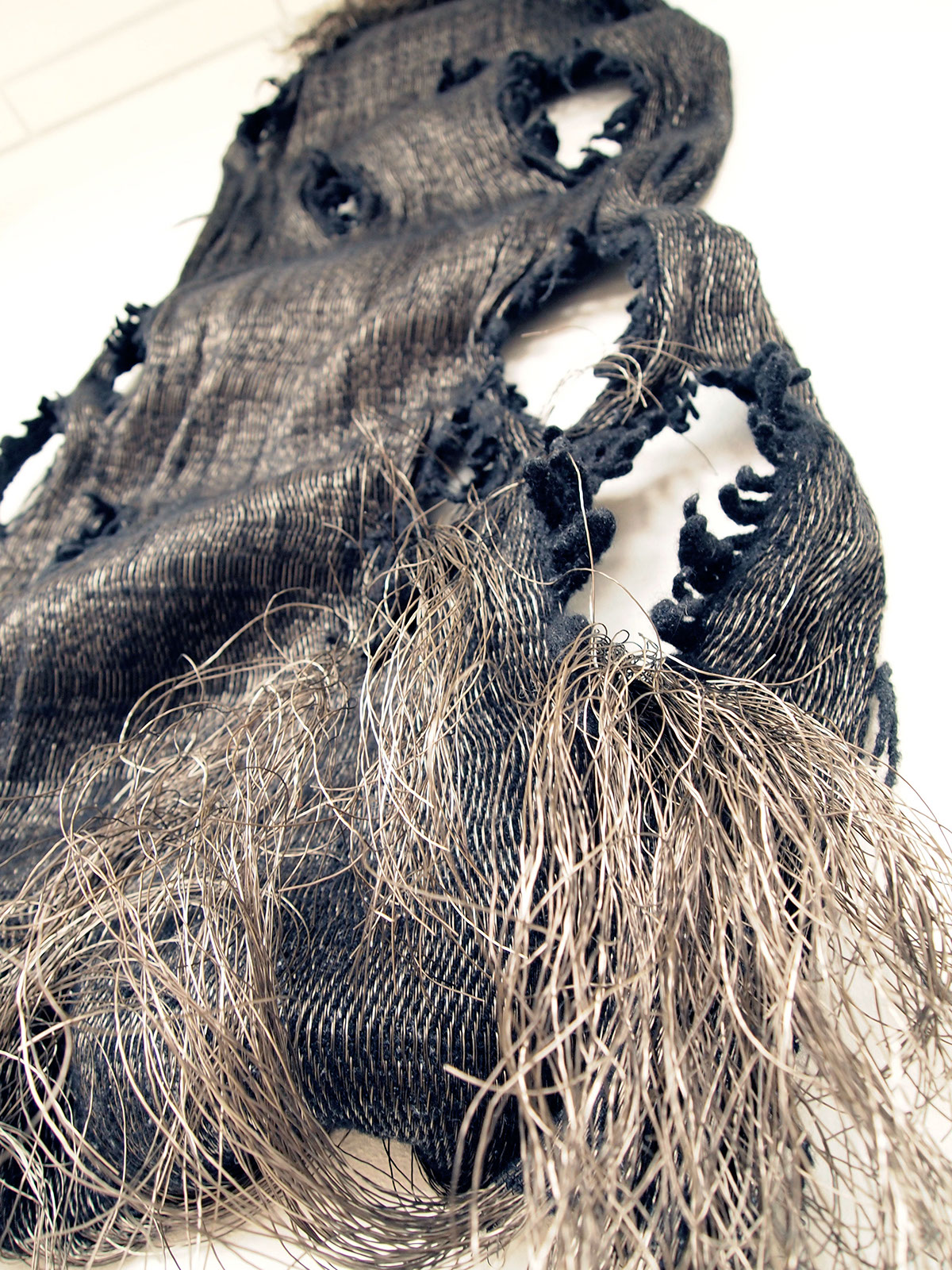

Striped Double Cloth Project
Above and below-

Installation Project
Above

Woven Collection Development
Above and below-

Textiles and Material Studies

Historic Interpretation Project, Boro Textile-above
Historic Interpretation Project, Found Textile-below
Installation Project
Below
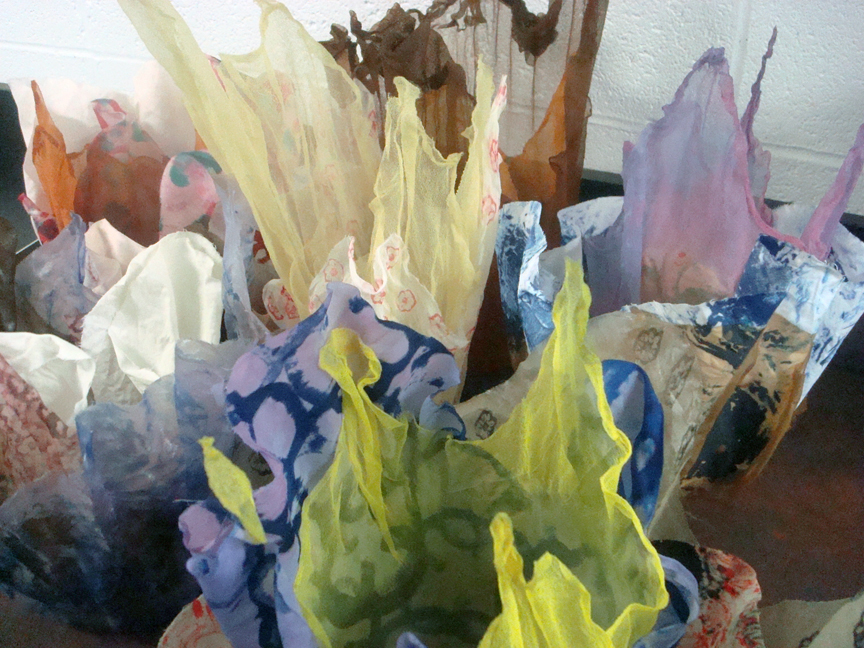




Creatures Project
Below-
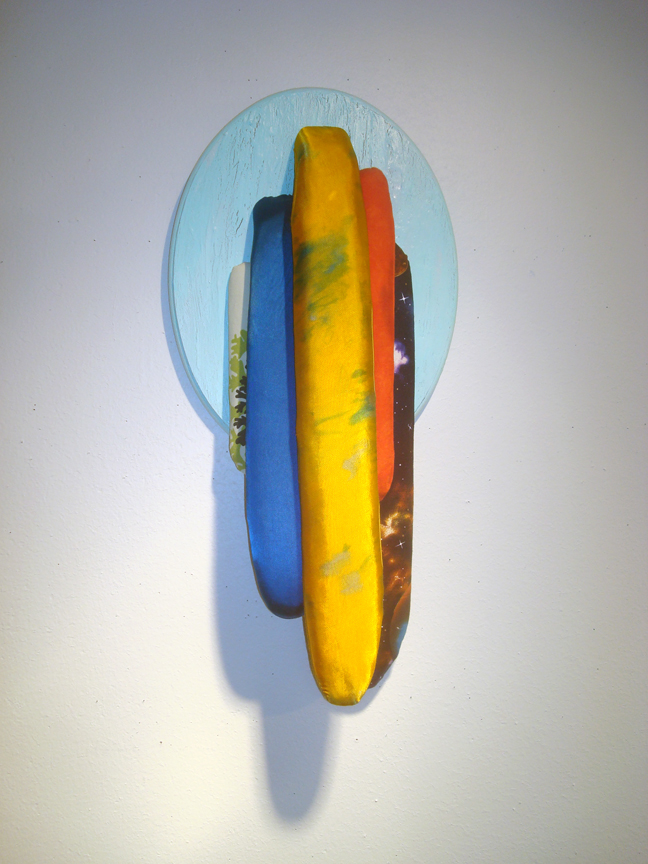

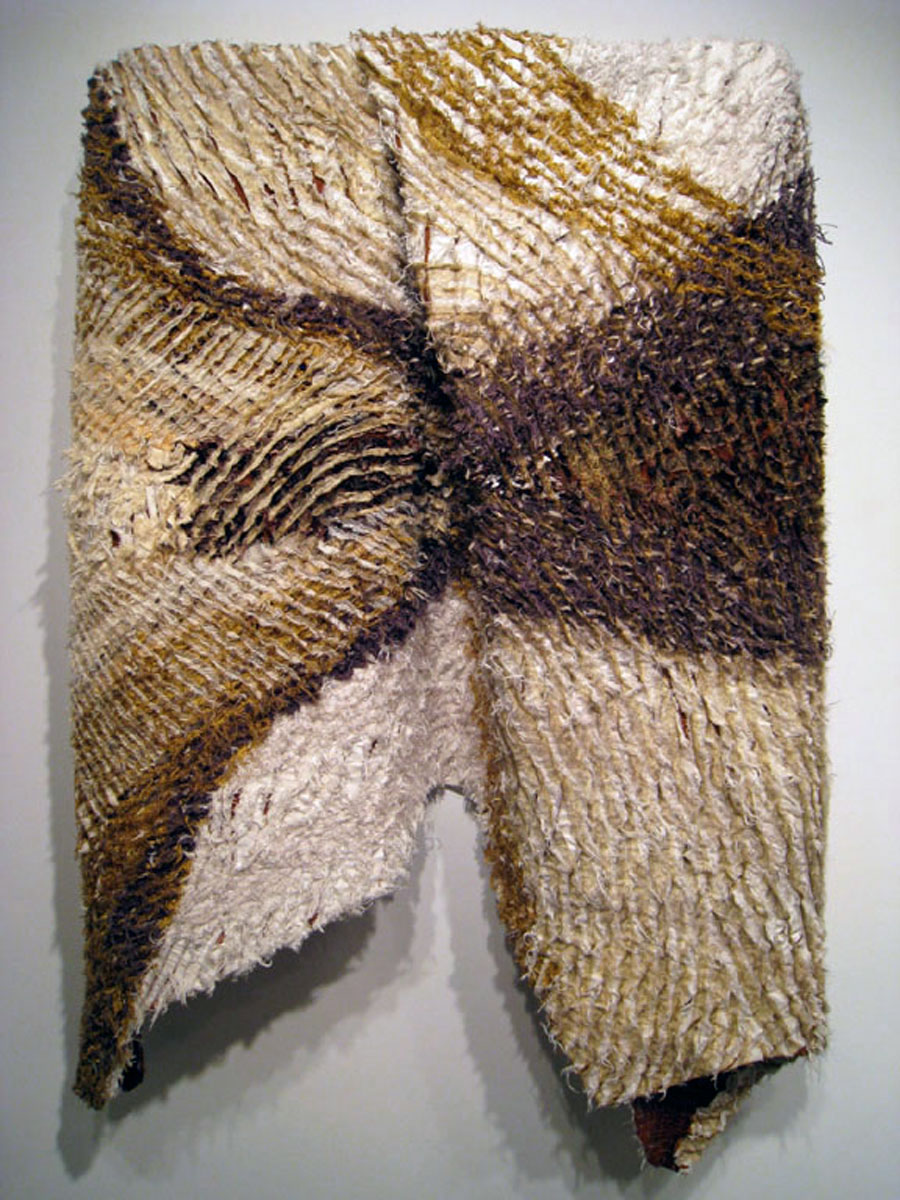

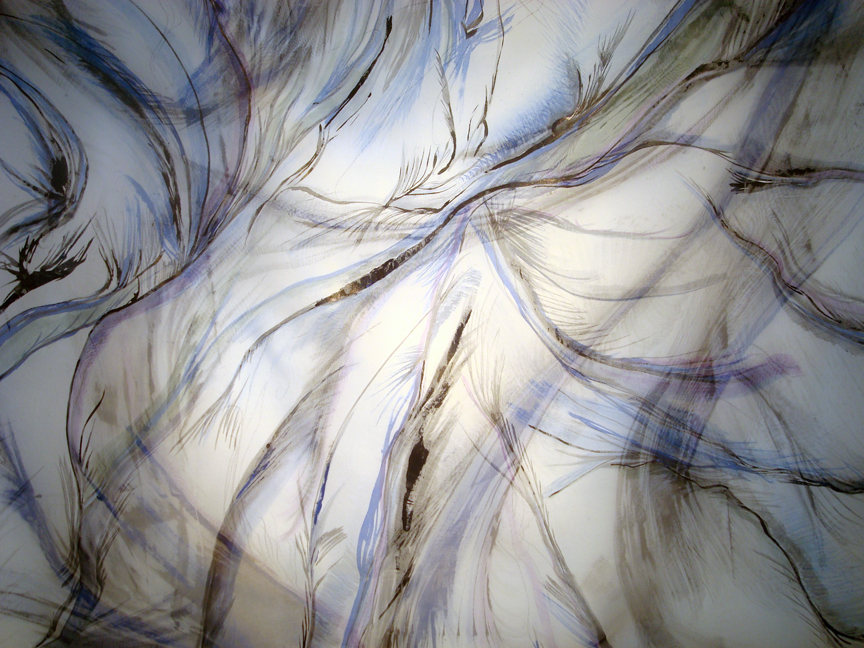
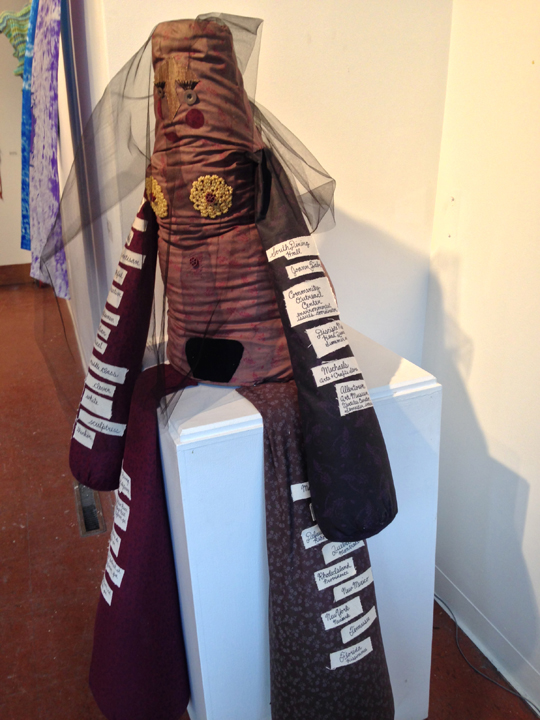
Memory Project
Above and below-







Place Project, Resist dyeing and painting
Above and below-


Below-Free motion Embroidery and Applique works, Place Project


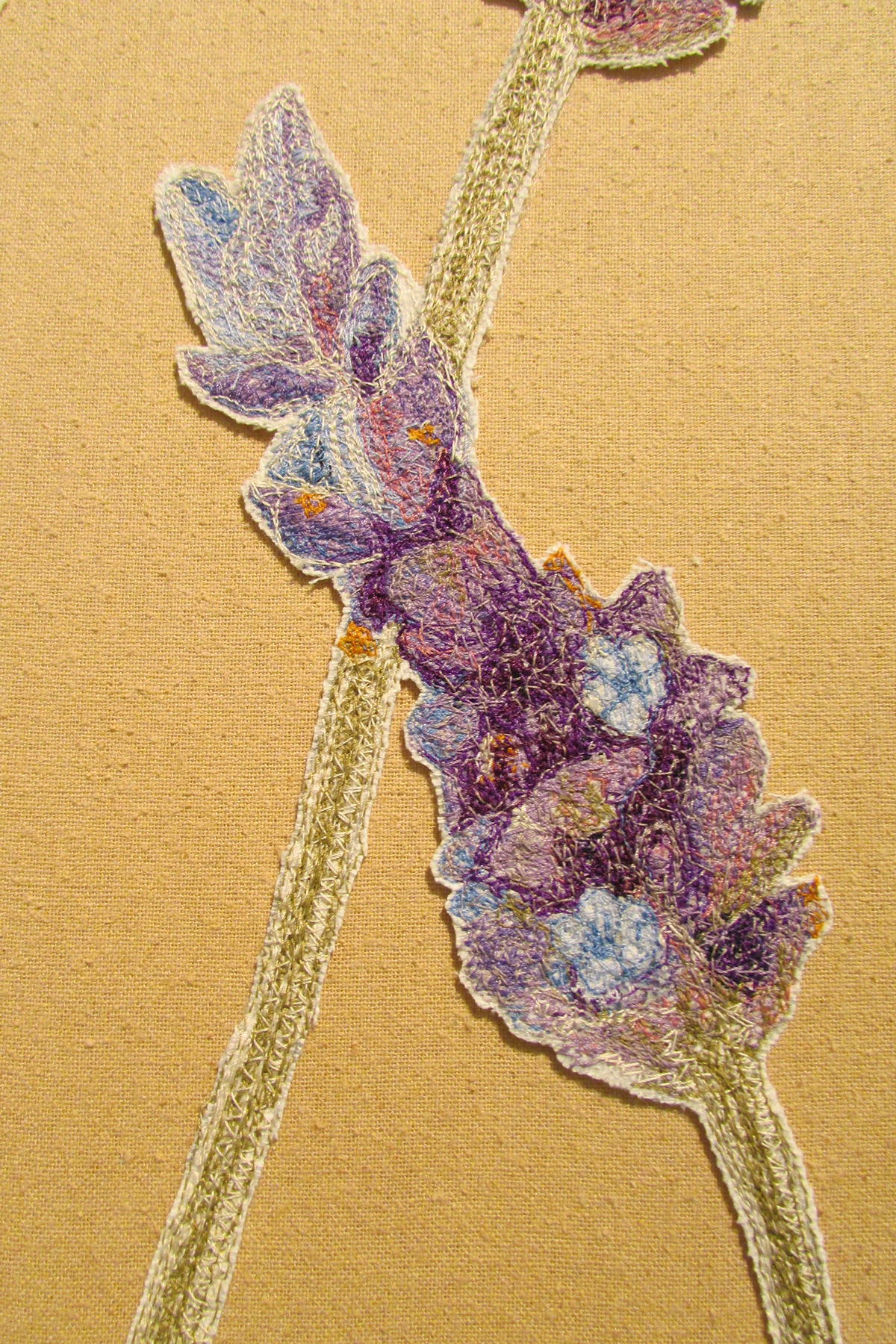



Repeat or Trnasformed Module Project

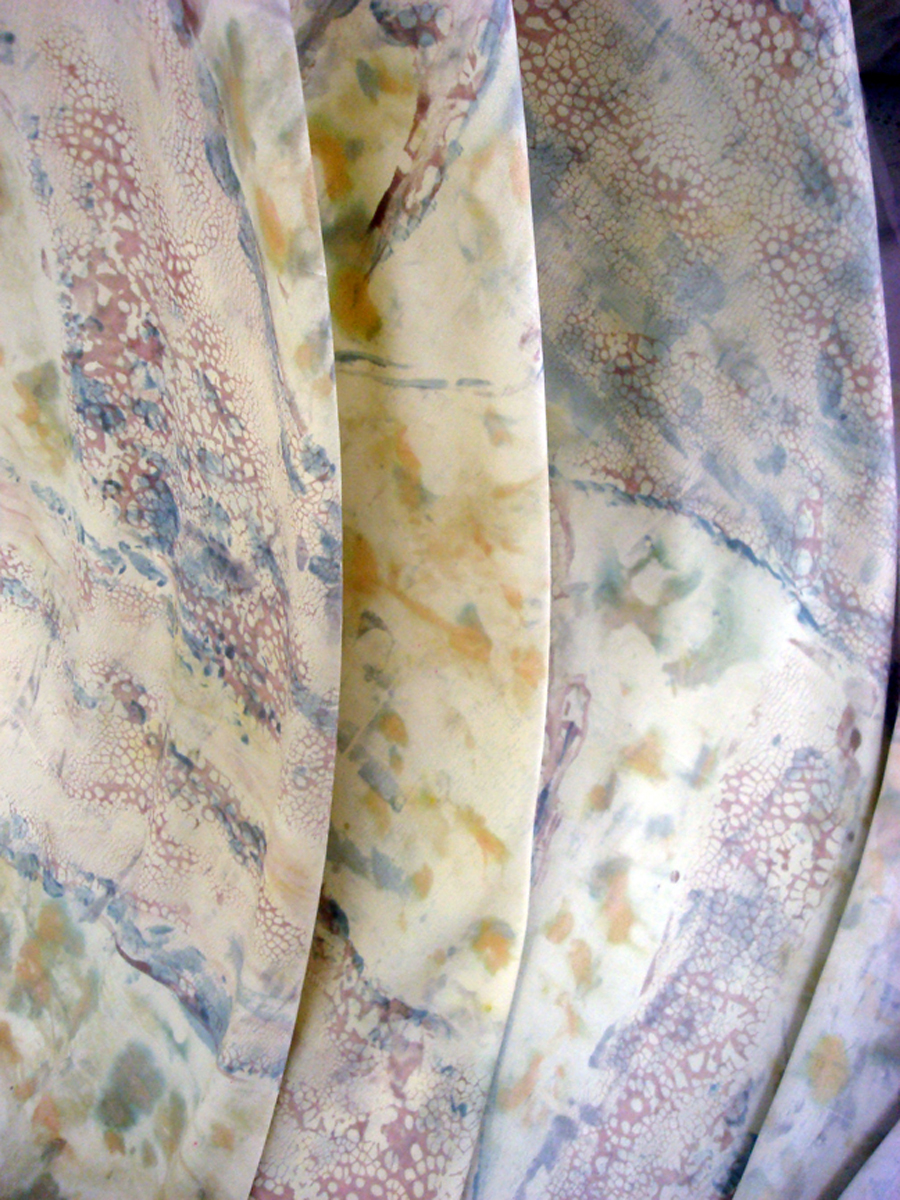
Collection Development
Above and below-




Thesis/Degree Projects

Narrative project
Above and below-


Senior project based on Place
Above and below-

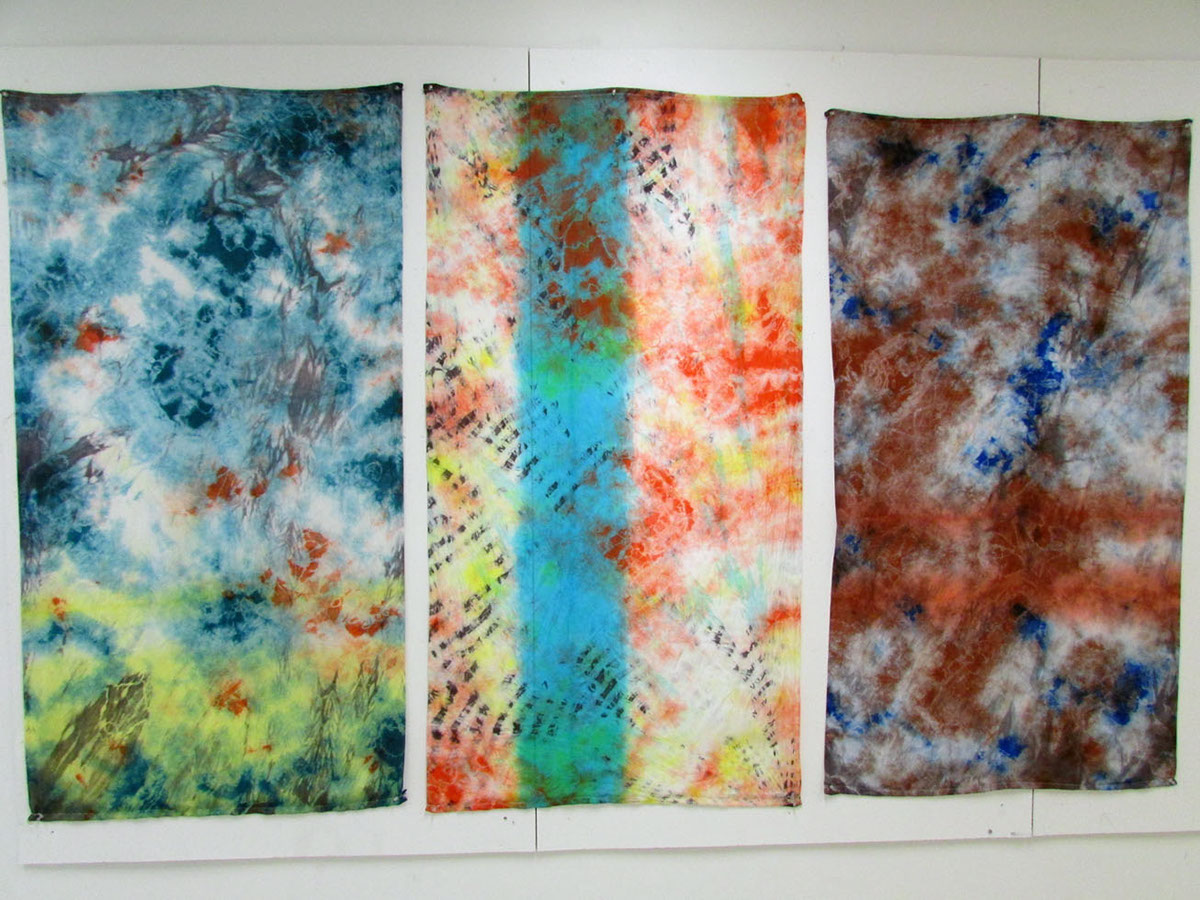
Senior Project based on Place Project
Above and below-
Senior Project based on Memory Project
Below-
Light & Surface Project








Booth-Philadelphia Museum of Art Craft Show
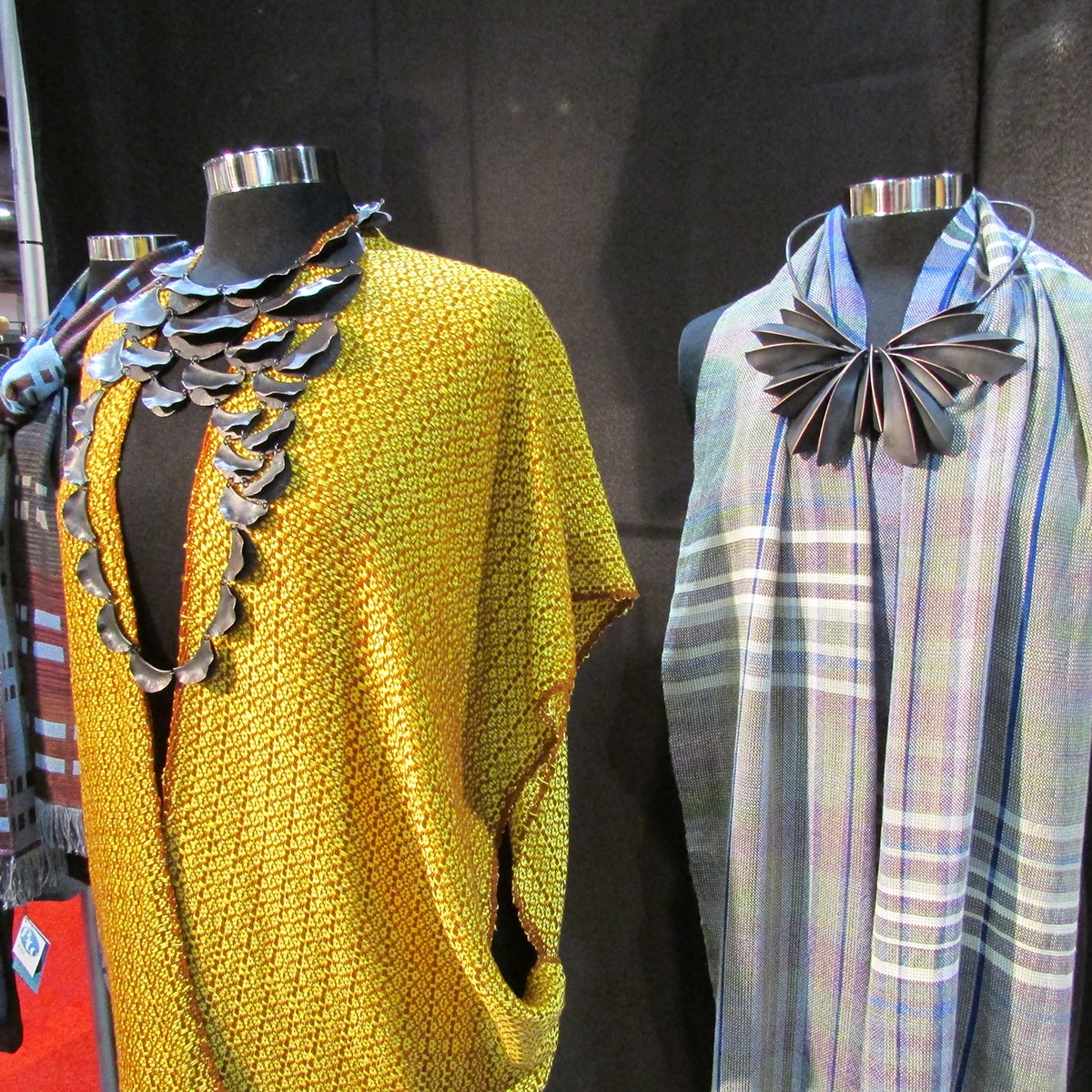

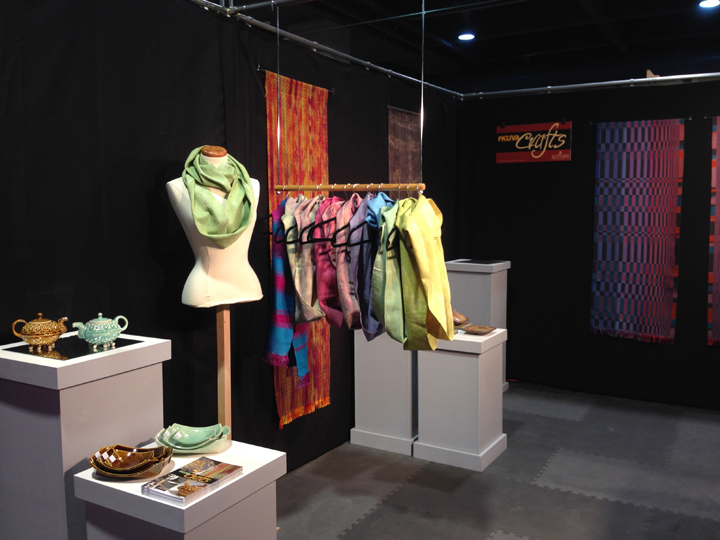
Above- Collaborative Project with Fibers student and Liz Collins, University of Georgia Lamar Dodd School of Art

Above- Collaborative Project with Fibers students, Graduate students and Graphic Design students and artist Piper Shepard, University of Georgia Lamar Dodd School of Art
Sample Syllabi
#1
WEAVING 1
Professor Michael Radyk Office:121B email: radyk@kutztown.edu
Introduction
Weaving is a primal form of architecture. Early textiles were designed to replicate nature; nests, webs and hides. Twining, netting and felting were used to make early textile forms. The interlacing of two elements is weaving. Weaving could produce baskets, blankets andshelter, leading eventually to the pattern, structure and the representation of nature.
The woven textile is like cement. The presence of its movable form and uses are ubiquitous, present and existing through out our lives. Woven textiles function in the home, workspaces, on the body, beneath our feet, recreational spaces, hospitals, in museums and galleries. They encompass art, design and craft. Everyday.
Aims
This course will research the woven structure, color, pattern, texture and provide an understanding of woven fabric design and construction. Students will learn to set up and use a four harness loom and explore woven design through the study of drafting and fabric analysis. In addition to acquiring a solid technical foundation, the emphasis will be on developing and researching a personal and individual approach to the work and textiles. Drawing, painting, surface pattern and manipulation will also be used to expand ideas and concepts. The development of skill and technique is researched through a series of samples exploring plain, twill, satin, pattern and tapestry weaves. Those weaves form the foundation of woven cloth. The techniques are simple but are perfected by repetition, practice and experimentation.
Concepts
The use of visual references materials and themes will help synthesize the weaving and design process. The student will begin with finding a place, which will be used to research and find visual reference material for your weavings. The references will be used as a context from which to derive color, texture, form and conceptual content to be explored in the work. Also, research on the history of your chosen place can expand the depth of your work.
Assignments will be oriented towards a variety of forms and end uses. There will be weekly and bi-weekly assignments and sample weaving, each exploring a new structure and utilizing the color and design references.Through pattern development, repetition, color interaction and finishing the weaver will investigate the rhythms of woven structure that ae sometimes elusive to the beginner. The focus is on producing hand-woven cloth that has a quality of hand and design. The final project involves the design of a collection of textiles for a specific architectural space.
Process
Woven fabric is a planar structure consisting of two or more sets of yarns interlacing at right angles. These are called the warp yarns and the weft or filling yarns.The warp yarns are the yarns running length wise in the loom. Each single warp thread is called an end. The filling or weft yarns are the yarns running across the warp. Each single filling yarn or weft is called a pick. The selvage is edge of the fabric.
Warp = Ends / Weft = Picks
Tabby is another for plain weave.
RequiredTextbook
The Handweaver’s Pattern Directory by Anne Dixon
A Handweaver’s Pattern Book by Maguerite PorterDavison-optional
Required Magazine: Possible choices:American Craft Magazine, Ornament
Handouts and Readings
Course Description
Weaving I is an introduction to techniques of weaving on the four-harness loom.The following issues are emphasized: design, color, materials, cultures, history, important textile/fiber artists, and the meaning of textiles in the contemporary art world.
Objectives
Students will:
1. Understand the basics of the four-harness floor loom.
2. Weave technical samples, which will serve as an introduction to materials and techniques.
3. Become acquainted with both traditional and contemporary approaches to weaving.
4. Gain information on the history of textiles.
5. Become acquainted with the work of contemporary fiber artists and designers.
6. Solve assigned creative problems with techniques learned.
7. Understand the relationship between historic textiles as objects, design and contemporary fiber art objects.
Course Components
The following techniques/concepts will be researched:
A. PATTERN AND STRUCTURE SAMPLER
B. TAPESTRY, RUG WEAVING
C. EXPERIMENTAL MATERIALS
D. COLOR and WOVEN STRUCTURES
E. TRANSLATING, ABSTRACTING REFERENCES INTO WOVEN CLOTH
F. COMPLETE A FINAL PROJECT
G. RESEARCH ON DESIGNER, ARTISTS, or HISTORICAL
H. COMPILE A SOURCE BOOK, SKETCHBOOK AND NOTEBOOK
Required Supplies and Materials
Large Sketchbook,
1 cone cotton carpet warp from the bookstore
tape measure
Shuttles
tapestry comb
Ability to make color copies
Digital camera and ability to print images-if you want to use your own images as references
Acrylic paint, charcoal,
paper for drawing and painting, at least 11 x 17 orlarger
Scissors,
3 ring binder or binder to keep handouts
Presentation boards(at least 19 x20), erasable colored pencils, calculator, measuring tape, t-pins, push pins,
Sobo glue
Various yarns-plan on spending about $100.00-150.00
alternative materials for wefts and filling
Large tapestry needle,
ball of white cotton twine
4 cones 5/2 Cotton, from bookstore or ordered from:4
www.halcyonyarn.com
4 cones of your choice of fiber:
10/2 mercerized cotton or
8/2 Bamboo or
8/2 or 10/2 Tencel or 20/2 silkor2/14 Alpaca & Silk Blend or
8/2 Cottolin
NylonThread From Atlanta Thread Company
FIELD TRIP NYC
#1
WEAVING 1
Professor Michael Radyk Office:121B email: radyk@kutztown.edu
Introduction
Weaving is a primal form of architecture. Early textiles were designed to replicate nature; nests, webs and hides. Twining, netting and felting were used to make early textile forms. The interlacing of two elements is weaving. Weaving could produce baskets, blankets andshelter, leading eventually to the pattern, structure and the representation of nature.
The woven textile is like cement. The presence of its movable form and uses are ubiquitous, present and existing through out our lives. Woven textiles function in the home, workspaces, on the body, beneath our feet, recreational spaces, hospitals, in museums and galleries. They encompass art, design and craft. Everyday.
Aims
This course will research the woven structure, color, pattern, texture and provide an understanding of woven fabric design and construction. Students will learn to set up and use a four harness loom and explore woven design through the study of drafting and fabric analysis. In addition to acquiring a solid technical foundation, the emphasis will be on developing and researching a personal and individual approach to the work and textiles. Drawing, painting, surface pattern and manipulation will also be used to expand ideas and concepts. The development of skill and technique is researched through a series of samples exploring plain, twill, satin, pattern and tapestry weaves. Those weaves form the foundation of woven cloth. The techniques are simple but are perfected by repetition, practice and experimentation.
Concepts
The use of visual references materials and themes will help synthesize the weaving and design process. The student will begin with finding a place, which will be used to research and find visual reference material for your weavings. The references will be used as a context from which to derive color, texture, form and conceptual content to be explored in the work. Also, research on the history of your chosen place can expand the depth of your work.
Assignments will be oriented towards a variety of forms and end uses. There will be weekly and bi-weekly assignments and sample weaving, each exploring a new structure and utilizing the color and design references.Through pattern development, repetition, color interaction and finishing the weaver will investigate the rhythms of woven structure that ae sometimes elusive to the beginner. The focus is on producing hand-woven cloth that has a quality of hand and design. The final project involves the design of a collection of textiles for a specific architectural space.
Process
Woven fabric is a planar structure consisting of two or more sets of yarns interlacing at right angles. These are called the warp yarns and the weft or filling yarns.The warp yarns are the yarns running length wise in the loom. Each single warp thread is called an end. The filling or weft yarns are the yarns running across the warp. Each single filling yarn or weft is called a pick. The selvage is edge of the fabric.
Warp = Ends / Weft = Picks
Tabby is another for plain weave.
RequiredTextbook
The Handweaver’s Pattern Directory by Anne Dixon
A Handweaver’s Pattern Book by Maguerite PorterDavison-optional
Required Magazine: Possible choices:American Craft Magazine, Ornament
Handouts and Readings
Course Description
Weaving I is an introduction to techniques of weaving on the four-harness loom.The following issues are emphasized: design, color, materials, cultures, history, important textile/fiber artists, and the meaning of textiles in the contemporary art world.
Objectives
Students will:
1. Understand the basics of the four-harness floor loom.
2. Weave technical samples, which will serve as an introduction to materials and techniques.
3. Become acquainted with both traditional and contemporary approaches to weaving.
4. Gain information on the history of textiles.
5. Become acquainted with the work of contemporary fiber artists and designers.
6. Solve assigned creative problems with techniques learned.
7. Understand the relationship between historic textiles as objects, design and contemporary fiber art objects.
Course Components
The following techniques/concepts will be researched:
A. PATTERN AND STRUCTURE SAMPLER
B. TAPESTRY, RUG WEAVING
C. EXPERIMENTAL MATERIALS
D. COLOR and WOVEN STRUCTURES
E. TRANSLATING, ABSTRACTING REFERENCES INTO WOVEN CLOTH
F. COMPLETE A FINAL PROJECT
G. RESEARCH ON DESIGNER, ARTISTS, or HISTORICAL
H. COMPILE A SOURCE BOOK, SKETCHBOOK AND NOTEBOOK
Required Supplies and Materials
Large Sketchbook,
1 cone cotton carpet warp from the bookstore
tape measure
Shuttles
tapestry comb
Ability to make color copies
Digital camera and ability to print images-if you want to use your own images as references
Acrylic paint, charcoal,
paper for drawing and painting, at least 11 x 17 orlarger
Scissors,
3 ring binder or binder to keep handouts
Presentation boards(at least 19 x20), erasable colored pencils, calculator, measuring tape, t-pins, push pins,
Sobo glue
Various yarns-plan on spending about $100.00-150.00
alternative materials for wefts and filling
Large tapestry needle,
ball of white cotton twine
4 cones 5/2 Cotton, from bookstore or ordered from:4
www.halcyonyarn.com
4 cones of your choice of fiber:
10/2 mercerized cotton or
8/2 Bamboo or
8/2 or 10/2 Tencel or 20/2 silkor2/14 Alpaca & Silk Blend or
8/2 Cottolin
NylonThread From Atlanta Thread Company
FIELD TRIP NYC
The Bard Graduate Center: DecorativeArts, Design History, Material Culture is a graduate research institute committed to studying the cultural history of the material world. At the BGC, our focus is on Cultura. This ancient Latin word referred to the class of activities in which human beings acted on, and so transformed, their natural surroundings. We have taken this as the outline of our institutional project :studying the substances intervened upon, the processes used to make these interventions, and the consequences of these interventions for the lives ofhuman actors.
Hats: An Anthology by StephenJones—a collaboration between the Victoria and Albert Museum in London and Stephen Jones, the world’s foremost hat designer—features more than 250 historic and couture hats chosen with the expert eye of the master milliner. The curators have added an array of distinctive American hats and work by contemporary New York milliners.
Location
The Main Gallery and Focus Gallery are both located at 18 West 86th Street, between Central Park West and Columbus Avenue, in New York City.
JapanSociety
Location:
333 East 47th Street
New York, NY 10017
Fiber Futures: Japan's Textile Pioneers showcases the dynamic field of Japanese fiber art. Organized as a juried show jointly presented by Japan Society and International Textile Network Japan in collaboration with Tama University Art Museum, the works on display range from ethereal silk and hemp to paper pulp and synthetic fiber using methods that are sometimes deeply traditional, but sometimes employ the latest weaving and dyeing technology along with an environmentally conscious "green" ethos. Moving far beyond traditional utility, Japan's textile pioneers fuse past and present to create innovative, beautiful and sometimes challenging works of art.
Museum at FIT, Fashion Institute of Technology
Admission to exhibitions is free.
Address:Seventh Avenue at 27 Street
New York City 10001-5992
Daphne Guinness
The exhibition Daphne Guinness features approximately 100 garments and accessories from Guinness' personal collection, including designs from the likes of Alexander McQueen, Azzedine Alaïa, Karl Lagerfeld for Chanel, John Galliano for Christian Dior, Dolce &Gabbana, Rick Owens, Gareth Pugh, and Valentino. Guinness' own designs are also on display. The exhibition is co-curated by Daphne Guinness and Valerie Steele, Director and Chief Curator of The Museum at FIT.
Metropolitan Museum-1000 Fifth Avenue (at 82nd Street), New York, NY 10028
Friday and Saturday: 9:30 a.m.–9:00 p.m.
Arts of Korea/Patchwork Textiles throughDecember 11, 2011 On view are highlights from the Museum's Korean collection,including ceramics, metalwork, lacquer, and sculpture, dating from about thefourth century B.C. to 2008
After the Gold Rush: Contemporary Photographs from the Collection Through January 2, 2012 The title of the exhibition comes from a song of 1970 by Neil Young; the verses contrast a romanticized past, a present of squandered plenty, and an uncertain future.
The 9/11 Peace Story Quilt Through January 22, 2012 The 9/11 Peace Story Quilt was designed by Faith Ringgold and constructed in collaboration with New York City students ages eight through nineteen.
Paper Trails: Selected Works from the Collection, 1934–2001ThroughNovember 27, 2011The modern and contemporary artists in this installation have translated their fascination with paper into works that defy conventional definitions of drawing. Featured are thirty-six works on paper by twenty-four artists, including Marcel Duchamp, Jean Dubuffet, Franz Kline, Kara Walker, and Kiki Smith.
Romare Bearden (1911–1988): A Centennial Celebration Through January 8, 2012
Romare Bearden's vibrant mural-size tableau The Block (1971) is on view as part of a centennial celebration of the artist's birth.
SCHEDULESUBJECT TO CHANGE
Assessment/GradingWeaving 1
Quality of work: Creativity, craftsmanship, originality, presentation, level of commitment,material investigation, use of references and understanding of concepts and techniques.
Participation: Ability to communicate and articulate your research, work and ideas. Respond to discussions of your work, class CRITIQUES & presentations and the work and research of others.
Breakdown for grading:
Woven Samples and Exploration of Techniques and Materials
Craftsmanship
Research Project on artists, designers
Participation
Notebook/Sourcebook Assignments, research, samples, sketches and drawings
Final Project
Schedule and Requirements are subject to change at the Professors discretion.
Plan on spending at least 10-15 hours outside of class weaving and researching.
Attendance Policy
Attendance at critiques is required: Both student and work ready to critique.
Missing a Critique will result in your grade being lowered by one grade for the project critiqued.
Do not miss any classes:The information and exchange of your work and ideas will be missed. If you miss a class you are required to get the information covered from another student.
4 absences:Drop a full letter grade.
3 times being late or 3 times leaving early = 1absence
Official documentation must accompany a request to excuse an absence. Documentation does not necessarily mean a student will be excused.
#2
Textiles & material Studies 1 & 2
CFT 241, 341 Professor Michael Radyk
Course Description:
This course focuses on basic surface design techniques that enable students toapply images and texture to fabric and fiber. Traditional techniques and contemporary variations are explored as methods to develop meaningful surfaces that incorporate image, pattern and surface texture. Both technical understanding and creative use of media are stressed.
Course Goals: The following course goals articulate the general objectives and purpose of this course:
1. To safely use and handle materials and equipment in the studio.
2. To develop proficiency in a variety of surface design techniques such as direct dye applications resists.
3. To develop an understanding for the metaphorical and symbolic usage of pattern and image through research and practice.
4. To build a knowledge base of historical and contemporary surface design techniques, works, and practitioners.
Student Learning Outcomes:
The following course outcomes indicate competencies and measurable skills that students develop as a result of completing thiscourse:
1.Students will be able to use dyes, resists on a variety of natural fibers.
2.Students will understand and use appropriate course-related vocabulary.
3. Students will create a research and development notebook based on material learned in this class.
4. Students will develop and execute a final project, which demonstrates technical skill and conceptual development.
5. Learn the basics of advanced fiber techniques.
6. Become familiar with experimental approaches.
7. Use multiple processes.
8. Develop independent and personal approaches to their work
9. Use design skills related to repeat pattern, manipulation, hand painting and collage.
Field Trip(s):
Library
Philadelphia Museum Of Art
Fiber Philadelphia, Crane Arts Building & Biennial Exhibitions,
Fabric Workshop and Museum,
Wexler Gallery, Synderman Gallery, Philadelphia Art Alliance, ICA
NYC, Chelsea Galleries
Metropolitan Museum,
Museum of Arts and Design,
FIT Museum
Brooklyn Museum: Keith Haring, The Dinner Party, Rachel Kneebone
Extra Help Session(s):
Fridays, as needed or during office hours
1. To safely use and handle materials and equipment in the studio.
2. To develop proficiency in a variety of surface design techniques such as direct dye applications resists.
3. To develop an understanding for the metaphorical and symbolic usage of pattern and image through research and practice.
4. To build a knowledge base of historical and contemporary surface design techniques, works, and practitioners.
Student Learning Outcomes:
The following course outcomes indicate competencies and measurable skills that students develop as a result of completing thiscourse:
1.Students will be able to use dyes, resists on a variety of natural fibers.
2.Students will understand and use appropriate course-related vocabulary.
3. Students will create a research and development notebook based on material learned in this class.
4. Students will develop and execute a final project, which demonstrates technical skill and conceptual development.
5. Learn the basics of advanced fiber techniques.
6. Become familiar with experimental approaches.
7. Use multiple processes.
8. Develop independent and personal approaches to their work
9. Use design skills related to repeat pattern, manipulation, hand painting and collage.
Field Trip(s):
Library
Philadelphia Museum Of Art
Fiber Philadelphia, Crane Arts Building & Biennial Exhibitions,
Fabric Workshop and Museum,
Wexler Gallery, Synderman Gallery, Philadelphia Art Alliance, ICA
NYC, Chelsea Galleries
Metropolitan Museum,
Museum of Arts and Design,
FIT Museum
Brooklyn Museum: Keith Haring, The Dinner Party, Rachel Kneebone
Extra Help Session(s):
Fridays, as needed or during office hours
Text(s): Shiboriby Yoshiko Wada
Shibori for Textile Artists by Janice Gunner
Color: A Natural History of the Palette by VictoriaFinlay
Required Material(s):
· 3 Ring Binder/Notebook
· Drawing Supplies, pencils, charcoal, markers
· Sketch book
· Glue Sticks
· Presentation Boards
· Double sided tape
· Canvas boards 11 x 14 or Bristol Board 11 x 14
· Painting Supplies: acrylic paint, gouche, or watercolors
· Artist tape
· Colored Papers
· Scissors
· Pink Foam Boards
· Drop Cloths
· Extra Towels
· Containers for mixing paint and dye
· Needles and thread
· Various sizes of paint brushes
· Mason Jars 6
· Plastic wrap
· String and Rubber bands
· Fabric Paint 6-8 colors
· Fiber Etch and Devore Fabrics from Dharma Trading
· FABRICS:
· 4-8 yards Cotton Sateen
· 4 Cotton Broadcloth
· Other cotton Fabrics of your choice 4-8 yards
· Light weight Cotton or Linen Canvas 2-4 yards
· Fabrics for Final 4-8 yards
· 2-4 yards Silk gauze
· 2-4 yards Crepe de Chine
· 2-4 yards Silk Organza or gauze
· 2-4 yards, raw silk or other novelty silks
#3
SCAD, FIBR 748 - Professional Practices in Fibers Professor Michael Radyk
Section: 02 CRN: 32304
CourseDescription:
This course is a forum to identify, discuss, and prepare for professional practices in the fibers field. Topics include artists’ statements, resumes, grants and business plans. Professionalism in presentation and documentation is emphasized. Prerequisite(s): FIBR 716.
CourseGoals: The following course goals articulate the general objectives and purpose of this course:
1. Students will complete a research notebook.
2. Students will compile a professional résumé and/or CV.
3. Students will write an effective artist’s statement.
4. Students will design promotional material that complements the portfolio.
5. Students will write a business plan or a grant proposal.
6. Students will apply for at least two professional practice opportunities.
7. Students will complete a cohesive portfolio that includes actual, printed and digital examples of current work (as applicable to work).
Student Learning Outcomes: The following course outcomes indicate competencies and measurable skills that students develop as a result of completing this course:
1.Students will complete a research notebook.
2. Students will compile a professional résumé and/or CV.
3. Students will write an effective artist’s statement.
4. Students will design promotional material that complements the portfolio.
5. Students will write a business plan or a grant proposal.
6. Students will apply for at least two professional practice opportunities.
7. Students will complete a cohesive portfolio that includes actual, printed,and digital examples of current work (as applicable to work).
Schedule of Classes: Key events including assignments, projects due dates/exam dates:
Class 1:
Into to class
Class 2:
CV Review
Power Point and video
Class 3:
Show Applications
Project Ideas
CV Reviews
Class 4:
Student Power Point Presentations
Intro: Research project on contemporary designers and movements
Class 5:
Field Trip
Artist statement Review
Class 6:
Student Artist statement Review
Promotional materials overview
Website review
Class 7:
Project Descriptions
Guest lecture
Class 8:
Website review
Promotional materials review
Class 9:
Website progress
Color and design digital portfolio ideas
Class 10:
Guest lecturer
Apply to at least 3 shows
Class 11:
Presentations: Research project on contemporary designers and movements
Class 12:
Film or Guest Lecturer
Class 13:
Digital portfolio Due.
Class 14:
Guest speaker.
Class 15:
Field trip.
Class 16:
Residencies overview.
Digital Portfolio due.
Class 17:
Field Trip: Atlanta High Museum, Design Center
Class 18:
Guest Lecturer
Class 19:
Student Presentations at selected venue.
Class 20:
Final artist package and project descriptions due.
Grading Opportunities:
Your overall course grade will be computed according to the following breakdown:
Assignment
Weight
Edit/Delete
CV
10%
Artist Statement
10%
Presentation
Beginning and Exit
20%
Promotional material
10%
Proposals
10%
Portfolio
20%
Notebook
10%
Applications
10%
Total Weight
100%
SCAD, FIBR 748 - Professional Practices in Fibers Professor Michael Radyk
Section: 02 CRN: 32304
CourseDescription:
This course is a forum to identify, discuss, and prepare for professional practices in the fibers field. Topics include artists’ statements, resumes, grants and business plans. Professionalism in presentation and documentation is emphasized. Prerequisite(s): FIBR 716.
CourseGoals: The following course goals articulate the general objectives and purpose of this course:
1. Students will complete a research notebook.
2. Students will compile a professional résumé and/or CV.
3. Students will write an effective artist’s statement.
4. Students will design promotional material that complements the portfolio.
5. Students will write a business plan or a grant proposal.
6. Students will apply for at least two professional practice opportunities.
7. Students will complete a cohesive portfolio that includes actual, printed and digital examples of current work (as applicable to work).
Student Learning Outcomes: The following course outcomes indicate competencies and measurable skills that students develop as a result of completing this course:
1.Students will complete a research notebook.
2. Students will compile a professional résumé and/or CV.
3. Students will write an effective artist’s statement.
4. Students will design promotional material that complements the portfolio.
5. Students will write a business plan or a grant proposal.
6. Students will apply for at least two professional practice opportunities.
7. Students will complete a cohesive portfolio that includes actual, printed,and digital examples of current work (as applicable to work).
Schedule of Classes: Key events including assignments, projects due dates/exam dates:
Class 1:
Into to class
Class 2:
CV Review
Power Point and video
Class 3:
Show Applications
Project Ideas
CV Reviews
Class 4:
Student Power Point Presentations
Intro: Research project on contemporary designers and movements
Class 5:
Field Trip
Artist statement Review
Class 6:
Student Artist statement Review
Promotional materials overview
Website review
Class 7:
Project Descriptions
Guest lecture
Class 8:
Website review
Promotional materials review
Class 9:
Website progress
Color and design digital portfolio ideas
Class 10:
Guest lecturer
Apply to at least 3 shows
Class 11:
Presentations: Research project on contemporary designers and movements
Class 12:
Film or Guest Lecturer
Class 13:
Digital portfolio Due.
Class 14:
Guest speaker.
Class 15:
Field trip.
Class 16:
Residencies overview.
Digital Portfolio due.
Class 17:
Field Trip: Atlanta High Museum, Design Center
Class 18:
Guest Lecturer
Class 19:
Student Presentations at selected venue.
Class 20:
Final artist package and project descriptions due.
Grading Opportunities:
Your overall course grade will be computed according to the following breakdown:
Assignment
Weight
Edit/Delete
CV
10%
Artist Statement
10%
Presentation
Beginning and Exit
20%
Promotional material
10%
Proposals
10%
Portfolio
20%
Notebook
10%
Applications
10%
Total Weight
100%
MICHAELRADYK
QUALIFICATIONSand TECHNICAL SKILLS
Able to teach undergraduate to graduate level
Design
Product Development
Research Practices
Thesis and Degree projects
Studio classes, special topics studios and seminars
Professional Practices
Textile Concepts
Color
Design and sampling
Artist and Brand Devolopment
Merchandising
Craft and Fiber/Textile History
Contemporary Practices in Textiles and Fashion
Hand Weaving 4-16 Harness
Dobby weaving, 16-24 Harness
Tapestry
Rug Weaving
Pattern Weaving
Wet Felting, both hand and machine
Nuno Felting, both hand and machine
Needle Felting, both hand and machine
Jacquard Loom Weaving
Digital Design
Surface Design and Pattern
Resist Dyeing
Shibori
Dyeing and Finishing
Reactive Dyes
Acid Dyes
Fabric Identification
Machine and Hand Embroidery
Free Motion Embroidery
Knotting
Looping
Fabric Manipulation: including sewing techniques, pleating, shirring, tucking
Embellishment
Beading
Sewing Construction
Woven Rug, including pile weaves, repp weaves, corduroy,
Garment and Accessory Design,
Color
Material Research
3 Dimensional Textiles
Non Loom Structures
Applique
QUALIFICATIONSand TECHNICAL SKILLS
Able to teach undergraduate to graduate level
Design
Product Development
Research Practices
Thesis and Degree projects
Studio classes, special topics studios and seminars
Professional Practices
Textile Concepts
Color
Design and sampling
Artist and Brand Devolopment
Merchandising
Craft and Fiber/Textile History
Contemporary Practices in Textiles and Fashion
Hand Weaving 4-16 Harness
Dobby weaving, 16-24 Harness
Tapestry
Rug Weaving
Pattern Weaving
Wet Felting, both hand and machine
Nuno Felting, both hand and machine
Needle Felting, both hand and machine
Jacquard Loom Weaving
Digital Design
Surface Design and Pattern
Resist Dyeing
Shibori
Dyeing and Finishing
Reactive Dyes
Acid Dyes
Fabric Identification
Machine and Hand Embroidery
Free Motion Embroidery
Knotting
Looping
Fabric Manipulation: including sewing techniques, pleating, shirring, tucking
Embellishment
Beading
Sewing Construction
Woven Rug, including pile weaves, repp weaves, corduroy,
Garment and Accessory Design,
Color
Material Research
3 Dimensional Textiles
Non Loom Structures
Applique


